CTIA 2010
Mar 22, 2010, 9:00 PM by Eric M Zeman, Philip Berne and Rich Brome
updated Mar 24, 2010, 6:49 PM
On the ground in Las Vegas; hands-on with the Samsung Strive & Sunburst, HTC EVO 4G, Samsung Galaxy S and Kyocera Zio, plus more new phones from Motorola, LG and ZTE.
Part 1
Motorola i1
Motorola's i1 is the first Android phone for Sprint's Nextel iDEN network, and one of the first ruggedized Android phones.
The fact that it's ruggedized is impressive, because it's relatively sleek and thin, for a ruggedized phone. The design is at least as nice as the Cliq XT, and in fact looks very similar to that phone; at a distance, you might mistake one for the other. The body feels solid and the physical buttons work well; they seem like they could be used with gloves. Unfortunately, the capacitive touch screen - and touch keys below it - won't work with gloves; this may be the one time we question the choice of a capacitive screen.
The ruggedized case isn't submersible, but it is rated for "blowing rain", and you can see a serious rubber gasket under the battery cover... that is, if you can pry it off. The i1 has a very strange sliding latch that helps you unlock and pry off the back, but only helps you about 1/4 of the way; getting it the rest of the way off requires strong fingernails and some determination. Getting it back on it just as tricky. It's among the more frustrating battery covers I've tried.
The interface looks like Blur, but it isn't. Motorola's signature green and blue buttons grace the bottom of the home screen, but the social networking integration isn't there. In spite of that, the i1 still runs Android version 1.5, an old version of the OS. The reason is simply that they started working on this device before newer versions were available from Google, and they've done work to customize it, integrating PTT (walkie-talkie) features and Motorola's custom Exchange solution (which syncs mail, contacts, and calendar.) Motorola didn't rule out an Android 2.x upgrade, but wouldn't commit to it, either.
The PTT customizations include support for PTT contacts and the weird ID numbers iDEN PTT requires. They've added a feature that lets you filter your contacts by just PTT contacts or just Exchange contacts. A special PTT widget on the home screen lets you quickly change what the PTT button does.
Inside, the i1 is powered by a Freescale 600 MHz ARM processor. It seems speedy enough cruising through basic tasks. On the data side, the i1 lacks any kind of 3G. It doesn't even have WiDEN, the pseudo-3G that Nextel offers. So any kind of Internet-accessing app is going to be deadly slow. That's why Motorola includes Opera Mini 5, a browser optimzed for slow connections; it's the only way they could make web browsing bearable on this phone. There is the standard Android browser, but you'd only want to use it when you have a WiFi connection.
There's no multi-touch on the i1, but they have added extra predicitive text options, including XT9 and the excellent Swype.
Here is a video tour of the Motorola i1 in action:
Opera Mini
Today Phone Scoop had another chance to sit down with Opera Mini for the iPhone. Overall, our impressions from Mobile World Congress in February remain unchanged. It beats the pants of the iPhone's Safari browser in terms of sheer speed.
The user interface is exactly the same as it is on Android, BREW, Java, or S60 handsets. It offers the speed dial, word search, history, customization tools and bookmark syncing that all the other versions of Opera Mini 5 offer to their respective platforms. What's most impressive is the speed and overall usability.
We shot so video to give you a better idea of just how fast it is:
Firefox Mobile
Mozilla today showed us the latest build of its Firefox Mobile browser, aka Fennec. The newest version comes with some user interface improvements, as well as a new desktop sync feature Mozilla calls Weave Sync.
The most interesting advances come with the new Weave desktop sync. The Firefox Mobile browser can link to a desktop version of Firefox and synchronize not only bookmarks, but also an entire Web history, providing a more robust search feature to browse recently visited Web pages. Weave sync even synchronizes open tabs, so whatever pages are open in tabs on a desktop Firefox browser will be obvious and accessible on the mobile version.
Weave sync uses Firefox's own servers to login and transfer information from the desktop to the mobile side. Mozilla says the data is completely encrypted, so the company won't be monitoring your browsing history, and because of the open source nature of Mozilla companies will also be able to maintain their own server for Weave sync, instead of using Mozilla's own service.
On the interface side, Firefox for Mobile now features hidden menu areas on the sides of the browser window. Users can access the new thumbnails view for open windows by swiping the window to the right, and open a new navigation sidebar by swiping to the left. The URL bar also features some new search features, similar to what's available on the desktop version of Firefox. In addition to entering a Web address or searching Google, it's now possible to search Twitter or other popular services directly from the address bar's text field.
Mozilla also showed us an internal iPhone app built by the company's engineers. Mozilla won't be submitting a version of its browser to Apple for the iPhone, unlike Opera with the Opera Mini 5 browser. Instead, the iPhone app, which is not available through the App Store, uses Mozilla's Weave sync to pull bookmarks and a browsing history from a connected desktop Firefox app, and these links can then be opened using the iPhone's Safari browser.
Check out our video walkthrough of the new browser and the iPhone app in action:
Samsung
Phone Scoop spent some time with Samsung's latest Android handset, the Galaxy S. The Galaxy S follows in the Wave's footprints in that it offers an impressive 4-inch AMOLED display and 1GHz processor inside.
The form factor itself is rather boring, a recent trend we've seen in touchphones. There's no real pizzazz that sets it apart (at least until you turn on the screen). The weight feels great, and despite the 4-inch screen, it doesn't feel too wide or too big to put into your pocket. It is but 9mm thick. The buttons and controls were all easily found and worked well. I noticed no build quality issues with the demo units on hand, despite the fact that they were showing early prototypes.
The only glitch was the d-pad button. It looks like — and fools users into thinking — it is an optical mouse pad. It's not. At least, it didn't work that way when we played with it. The only other two buttons on the front are capacitive touch buttons. They worked well enough.
The real killer feature of the phone is the display. It spans 4 inches, packs in 800 x 480 pixels and uses Samsung's "Super AMOLED" technology. It looks absolutely phenomenal. Bright, sharp, crisp, and colorful. Our images and video don't do it justice. It's truly a marvel to behold.
The 1GHz processor means the device runs very quickly. We noticed no lag, no delays — only lickety-split action. The phone will come with some Samsung applications, including the new "Daily Life" application. Basically, the application feeds users information about their day — including appointments, weather updates, scheduling changes, etc — as the user progresses through the day. It's pretty neat, though we can see how some might find it distracting or annoying.
In all, it is an impressive Android device. I was glad to see Samsung ditch the TouchWiz and go with a naked Android experience on this device. That will lead to better usability and happier customers.
Here is a video demonstration:
Part 2
Bluetooth
OK, so perhaps Bluetooth isn't the sexiest topic to discuss at CTIA, but Phone Scoop had a real nice chat with the head of the Bluetooth Special Interest Group and gleaned enough information that we thought it was worth sharing with you.
Bluetooth 3.0
The Bluetooth 3.0+HS spec was first announced in April 2009. At the time, the Bluetooth SIG said that phones would be in the market by late 2009. The first Bluetooth 3.0 device (a Samsung handset) was certified in the last couple of months. The SIG admits that it will likely be the third quarter of 2010 before we see a real explosion in the number of Bluetooth 3.0+HS certified devices hitting the market.
What's so great about Bluetooth 3.0+HS? The SIG created a nifty trick way for Bluetooth devices to blast huge amounts of data wirelessly at fast speeds. It uses Bluetooth to pair the devices and initiate a data transfer, but then switches to 802.11 to complete that actual data push.
This will be a great way to transfer photos, videos and music between devices.
Bluetooth 4.0
The big deal with Bluetooth 4.0 is that it lets Bluetooth operate at extremely low power levels. Bluetooth 4.0 devices will more likely be watches, sensors, and other smaller items that need to save space. The combination of high speed and low power will make Bluetooth 4.0 a very powerful tool for mobile devices.
The spec for Bluetooth 4.0 was first introduced in December 2009. The Bluetooth SIG believes it will be finalized and adopted before the end of June 2010. Only then can hardware manufacturers start to work on devices with Bluetooth 4.0. Single mode devices certified with Bluetooth 4.0 won't be backward compatible with previous versions of Bluetooth. Dual-mode devices, however, will be backward compatible. Devices with 4.0 on board should reach the market in late 2010 or early 2011.
Hardware such as laptops — and even some phones — can update to Bluetooth 3.0+HS from Bluetooth 2.1+EDR with a firmware update. Hopefully that means handset makers can provide these updates to 3.0 phones at some point in the future.
HTC Evo 4G
HTC and Sprint gave us hands-on time with the first phone on Sprint's burgeoning WiMAX network, the HTC Evo 4G. The Evo 4G is physically very similar to the HTC HD2, a Windows Mobile 6.5 phone that also packs a 4.3-inch capacitive touch screen and a 1 GHz Qualcomm Snapdragon processor inside. The HTC Evo 4G runs Android 2.1 with HTC's newest version of the Sense UI concept. In the hand, the Evo 4G feels large, but the huge screen lends itself nicely to video content and Web browsing, which are both strong points for this WiMAX-enabled phone.
Data speeds on the phone were impressive, and Sprint has included some new apps and features that take advantage of the faster WiMAX network capabilities. The YouTube app that comes preloaded on the HTC Evo 4G is the first to take advantage of the new mobile High Quality (HQ) features. When a video is available in high definition on YouTube, it's available as an HQ video on the Evo 4G. The difference was noticeable. While normal YouTube videos played in a smaller window and looked pixelated and jerky, YouTube HQ videos looked smooth and clean, as good as a preloaded video, even though the clips were streaming over the 4G network.
The HTC Evo 4G also gets a Qik app built in, so you can stream videos live to a variety of supported Web sites, including Facebook. With an HD-capable (720p) camera around back, the Evo 4G can stream videos at WVGA resolution, 800 by 480. Qik streams look much better over the 4G network than I've seen from smartphones uploading over 3G. The Evo 4G also uses a front-facing, 1.3 megapixel camera, still a rarity on U.S. smartphones, and you can use this camera for lower resolution Qik streaming. This way, you can watch yourself on the large screen while the video is uploading.
Sprint and HTC were also demonstrating the HD video playback capabilities of the HTC Evo 4G. The phone features a mini-HDMI port on the bottom, so you can connect to a high def television to watch the HD movies recorded with the camcorder, or play prerecorded videos. Demonstrations were again impressive. HD content streamed smoothly without any jerkiness or pixelation.
Like the Palm Pre Plus on Verizon Wireless, the HTC Evo 4G can also share its network connection over Wi-Fi. Users can provide network access for up to 8 Wi-Fi enabled devices, and Sprint demonstrated this feature in action with a variety of products. Most interesting was a streaming movie from a Roku box, using the WiMAX connection provided by the Evo 4G. Video looked good and the streaming started quickly without much delay filling the buffer. To mimic recent Sprint ads, reps even broke out an Apple iPhone 3GS to demonstrate that the Evo 4G can share a fast Wi-Fi connection with AT&T's device.
If it sounds like I'm being unusually positive about the device, I must say that I was genuinely impressed by the first WiMAX handset I've tried, but it wasn't all perfect. The presentation came to something of a halt when Sprint demonstrated the phone's Adobe Flash capabilities. Compared to the super-fast, almost buffer-free load times of streaming video through YouTube and Qik, Flash seemed to tax the phone heavily, and the small snippets of Flash animation I saw were the least impressive demonstration on the device. This was not final hardware, of course, so we'll have to wait and see if this performance improves, especially as Adobe finalized Flash 10.1 support.
The HTC Evo 4G will be available this summer. Pricing and specific availability details have yet to be announced.
LG
At the LG booth here at CTIA Wireless 2010, LG was showing off a pair of distinctively low-end phones. Both of LG's newest offerings, the LG Remarq on Sprint and the LG Cosmos on Verizon Wireless, lack fast EV-DO networking, but as reps were quick to point out, this might have benefits for the phones' target audience.
LG Remarq
The LG Remarq is a squat, sliding QWERTY messaging phone for Sprint's 1xRTT network. The Remarq is an environmentally friendly model. The outer casing is made from just under 20% recycled plastic, and the entire phone is 87% recyclable. It felt a bit cheap in the hand, but not as flimsy as a phone like the unlocked Sony Ericsson Naite or the Motorola Renew on T-Mobile. Shipping materials will also be recyclable and more environmentally friendly than the usual kit.
The LG Remarq similar in size to the LG Lotus, with dimensions like a compact mirror, but it's a slider instead of a flip. Hardware features are decidedly low-end, like the 1.3 megapixel camera and the basic user interface. I like the One Click interface that Sprint uses on most of its 3G feature phones, including the LG Lotus, but the LG Remarq uses a more basic menu system that's similar in design aesthetic, but lacks the quick Internet shortcut and widget-like carousel of the One Click design. LG reps explained that One Click was left behind since the phone lacks a fast Internet connection.
The LG Remarq will go on sale May 9 on Sprint. The phone will be free with a contract agreement and mail-in rebates.
LG Cosmos
The LG Cosmos is nearly identical to the LG Rumor on Sprint. That is, the original, slower LG Rumor, not the improved LG Rumor 2. The Cosmos is also a 1xRTT device, on Verizon Wireless' network. As LG reps pointed out, Verizon Wireless is requiring that 3G messaging phones with a QWERTY keyboard come bundled with a data plan in addition to voice and texts. By keeping the phone on the slower network, LG also gives buyers the option of skipping the more expensive add-on. It's a sad day when a slower network is a beneficial feature for buyers.
Otherwise, the only real differences I could see between the LG Cosmos and the older LG Rumor are in the keyboard and the interface. The phone uses a basic Verizon Wireless menu system. The menus looked sharp and colorful, but the system was very basic. The numeric keypad was a bit nicer than I've on the LG Rumor, with a soft touch paint finish and a more stylish overall look. Typing on the full QWERTY keyboard, though, felt about the same. The keyboard is small, with stiff little keys that were not very easy to press.
The LG Cosmos will be available from Verizon Wireless this Thursday, March 25, for $30 with a contract agreement.
Kyocera
The new Android phone from Kyocera — pronounced ZEYE-oh — is a capable little smartphone that will surely please the pre-paid crowd. It pairs good-looking hardware with a low cost and easy usability.
The hardware is an early prototype, and definitely feels a hair cheap. I like metals, but the Zio is made from plastics. The plastics aren't any worse than what Kyocera has used before, however, and build quality was pretty good. I didn't notice any creaky seams or odd gaps in the way the pieces of the phone fit together.
There are four capacitive buttons on the front just below the display. These were wonky at best, and the "Menu" simply didn't work at all. The phone won't be launching until summer, so Kyocera still has plenty of time to work out the bugs. Between the four capacitive keys you'll find the trackball. The trackball worked just fine.
The Zio has the right set of hardware features, including the 3.5mm headset jack, microSD cards, quality 400 x 800 display, camera and so on. All the buttons and controls worked appropriately and I liked the rubber coating on the volume toggle and camera key. It provides them with a bit of much-needed grip.
On the software side of things, the device will ship with Android 1.6, though Kyocera says it will offer an Android update 2.0 upgrade soon after launch. It felt a bit sluggish in use. Screen transitions were slow and lagged. Some of the apps refused to open, and we definitely made the phone crash at least once. Again, given the early prototype nature of the demo unit on hand, we'll cut Kyocera some slack on that point.
Kyocera is saying the device will retail with a price point ranging between $160 and $220 before promotions. That' makes it one of the cheapest Android phones, and a perfect match for the pre-paid crowd.
Here's a video tour of the Zio:
Part 3
Samsung Strive & Sunburst
Samsung Strive
AT&T introduced its new package of messaging services for quick messaging phones with Samsung's new QWERTY slider, the Samsung Strive. The Strive is essentially a replacement for the Propel, in that it's a straightforward feature phone with a slide-out QWERTY text keyboard. Unlike so many messaging phone, it doesn't slide out sideways; everything stays vertical.
Though some of the new AT&T Quick Messaging features were unavailable on this phone, the new threaded messaging was active and it looked pretty good. Threaded messaging gives a more conversational view of SMS text messages, and though most smartphones have had this feature for a while, its slowly trickling down to feature phones and the quick messaging category. The new AT&T Address Book and AT&T Mobile Share features were not available, but both provide cloud sync and upload capabilities for the phone's contact list and photographs, respectively.
While the Propel had a landscape display, the Strive has a portrait display. This has a few implications: the display is much larger, but it also needs to be a certain width to accomodate the QWERTY keyboard, so you end up with some unusually larger borders on either side of the display, and a rather bulky phone overall. The build quality seems good. It feels plastic-y, but solid.
It also looks so much like other touch phones that I found myself constantly trying to operate the phone by touch. If your last phone wasn't a touch phone, this may not be an issue. The display is only QVGA resolution, which isn't good for web browsing, but it is a large display physically, so it may be a good choice for those with less-than-perfect vision.
The keys on the Strive are excellent, including the front keys, side keys and the QWERTY keyboard. The QWERTY keys are very similar to those on certain BlackBerrys, like the Tour, but perhaps even a tad better. They have just the right amount of rubbery feel, and just the right travel and feedback.
One bummer is no standard audio jacks. No 3.5mm headphone jack; not even a 2.5mm phone headset jack. At least it has a standard USB jack.
The interface is standard for an AT&T feature phone. The camera interface is typical for a Samsung feature phone. That's a good thing. There's a nice toolbar that pops up with easy-to-use options to adjust camera settings. The Strive does support 3G data and video sharing; which is nice to see on a relatively affordable phone. If you're on a budget and need an AT&T phone with 3G data and a good QWERTY keyboard, the Strive looks promising.
Samsung Sunburst
The Sunburst is a strange phone. It's designed to bring a full touch experience to a new low price level. To do that, they've left out quite a bit, including 3G data.
The Sunburst feels very small and light, although we wish it were a tad thinner. Build quality feels good, although being so light, some might think it feels a bit cheap. The display is decent; the touch sensor is resisitive, and decent. The buttons below the display and on the side are all excellent. There are no standard connectors of any kind, for audio, charging, data... nada. It's like a step back in time to find just a lone, proprietary Samsung connector, but that's exactly what you'll find on the Sunburst. It's unfortunate.
The interface is just neither sluggish nor speedy. While many cheaper touch phones struggle with scrolling lists, this is one area where the Sunburst seems to excel, and we're glad to see that. It has an older version of TouchWiz on the home screen, and standard lists for the rest of the menus. The music player is from AT&T, and not very good. The camera interface is a bright spot, though; it has Samsung's nice touch camera interface with translucent options down the side of the viewfinder.
If you must have the absolutely cheapest possible touch phone, and don't mind the lack of 3G data, there were no obvious deal-breakers on the Sunburst. It could be a decent choice for certain users.
Skype
Phone Scoop takes a hands-on look and how the Skype application for Verizon works. We're happy to report that it works quite well. Most of Skype's desktop features are offered in the mobile version, and the ability to reach out to Skype contacts is seamless.
Skype has done a good job of integrating the application into the native Android and BlackBerry platforms, and users of those devices will feel at home with the new application.
It is easy to access Skype contacts, import Skype contacts, make calls and initiate chat sessions.
Our favorite feature is the ability to see who is online and who is not, via the presence feature of the application. This means you have a live view of who's available to talk or chat.
Perhaps the one issue we have with the application is that it will ONLY work via Verizon's CDMA voice network. It won't work over Wi-Fi, which is something Skype mobile apps have traditionally offered. We feel this removes an important element of user choice.
Still, it works well, and will certainly make Skype addicts happy. Here's a video review of how it works.
Palm
Palm had very little to show off at this year's CTIA Wireless show. The company displayed the Palm Pre Plus and Palm Pixi Plus that will be available on AT&T, though Palm gave us no new information on specific availability dates. The Palm Pre Plus and Pixi Plus models on AT&T are nearly identical to their Verizon Wireless counterparts, we had to do some heavy digging to find the unique aspects of these phones. Most obvious, the phones will use AT&T Navigator instead of Verizon's VZ Navigator. The phones will also synchronize with AT&T's Address Book, bringing the new online contact service into the Palm Synergy fold. Otherwise, Palm was quite stingy with access and information, refusing to allow Phone Scoop to record video of the devices, which again are identical to the Verizon Wireless versions we've seen before, at the popular Pepcom Mobile Focus press event at the trade show.
ZTE
We visited with ZTE during the trade show, but unfortunately it didn't have much to show us. All the phones on display were under glass and we couldn't touch them or play with them at all.
That said, there was at least one unannounced handset sitting in a display case. The C76 is a basic bar-style phone with a 2-inch display. It will run BREW and offers Bluetooth 2.1, GPS, and a WAP web browser. It is diminutive in size and will be an entry-level device for those seeking a voice-centric device.
ZTE couldn't tell us which carrier was planning to offer the C76, but it is a CDMA 800/1900 handset that runs BREW. Given that pairing, there's only one logical carrier that could offer this phone: Verizon Wireless. (That's just an educated guess, though.)
ZTE also had QWERTY messaging device called the X990/U990. It is also a candybar style phone that's similar in form factor to a BlackBerry. It has a full keyboard and a touchscreen. It also has Bluetooth a 2 megapixel camera and an FM radio on board. What's really interesting is that this handset is available in multiple radio configurations, including CDMA-based and GSM-based. ZTE was not able to say if or when it will be offered by a U.S. carrier, but given its specs, it wouldn't be a poor assumption.
Part 4
Pantech
Pantech today showed us their new Quick Messaging lineup, including the Pantech Link and the Pantech Pursuit. Both phones feature AT&T's new Quick Messaging services, including the new threaded messaging, AT&T's online Address Book and the new Remote Vault for uploading and sharing pictures on AT&T's own Web site.
Pantech Link
The Pantech Link is a very thin messaging phone with a full QWERTY keyboard. It closely resembles the Nokia E71, though it's much lighter in the hand. The menus are simple AT&T feature phone stock, without too many advanced functions that you'd find on a smartphone. But Pantech is deliberately keeping things simple, and though the company wouldn't reveal pricing for these phones, they maintained that the devices would be competitive in the Quick Messaging space. In other words, they'll be cheap to buy.
The keyboard on the Pantech Link felt surprisingly good. The keys were well rounded and raised high, making for easy, fast typing. The menu wasn't anything special, but the new icons are colorful and the screen is plenty bright. All around, the phone doesn't feel as dense or solid as a more expensive smartphone like the Nokia Eseries, but it does feel well designed. Pantech reps were glowing about the texturized, rubber backing, and it did make for a nonstick surface and easy grip.
Pantech Pursuit
Pantech didn't let us take pictures of the Pantech Pursuit, but I did get to spend some time browsing the device. The Pursuit is a cute, squat little touchscreen phone with a full QWERTY slide underneath. Unlike the Pantech Link, the Pursuit felt more solid and dense, with more metal around the phone to give it some weight. It wasn't heavy, but it did have a good weight in the hand.
The resistive touchscreen worked pretty well. The phone has a sliding home screen where you can drop and rearrange app icons, and sliding menus in multiple panels. Like the Pantech Link, the menus were simple AT&T feature phone fare, but the look has been updated for the latest models, and the design is bright and colorful.
The phone also has some intelligent design choices. When you slide open the slider, the phone offers a quick shortcut menu of the most text-heavy apps, like messaging and e-mail. There are social networking apps on board, as well as AT&T music. All the basic feature phone kit, but the phone has an appealing design, and it should launch at an equally appealing price.
Airo A25is
I got a chance to check out the intriguing Airo A25is, one of only 3 intrinsically safe phones available on the market, according to Airo representatives. Instrinsically safe phones are safe to use in a combustible environment. Gas and petrochemicals are the most obvious application, but there are a range of jobs that require a phone that won't generate sparks, heat or static charge. The Airo A25is is also waterproof, so you can drop it in a pool for about 30 minutes without any trouble. It's one of the only waterproof touchscreens I've seen, and Airo wisely uses resistive tech on the screen so that you can use it with gloves on.
It's a huge device, but its also quite rugged and shock resistant. The Airo A25is runs Windows Mobile 6, a dated system to be sure, but still effective for hard core business users. Airo has also contracted SPB to create a custom interface on top, with huge buttons that make the phone much more touch friendly.
The Airo A25is is available for AT&T business customers. There is a similar version available that doesn't go the extra mile for intrinsic safety, and that phone, the Airo A25, is otherwise identical.
Comments
"With Google"?
(continues)
Youtube High Quality
BUT, I think i saw they mentioned in one of ...
(continues)
missing feature?


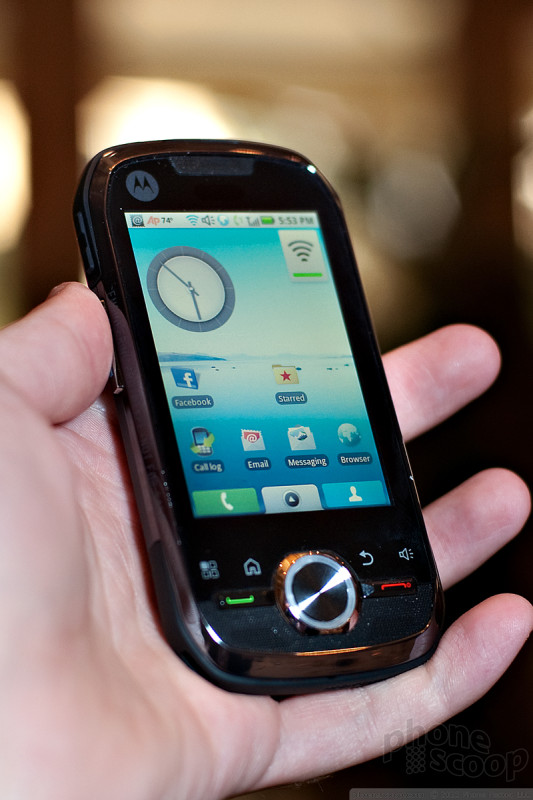












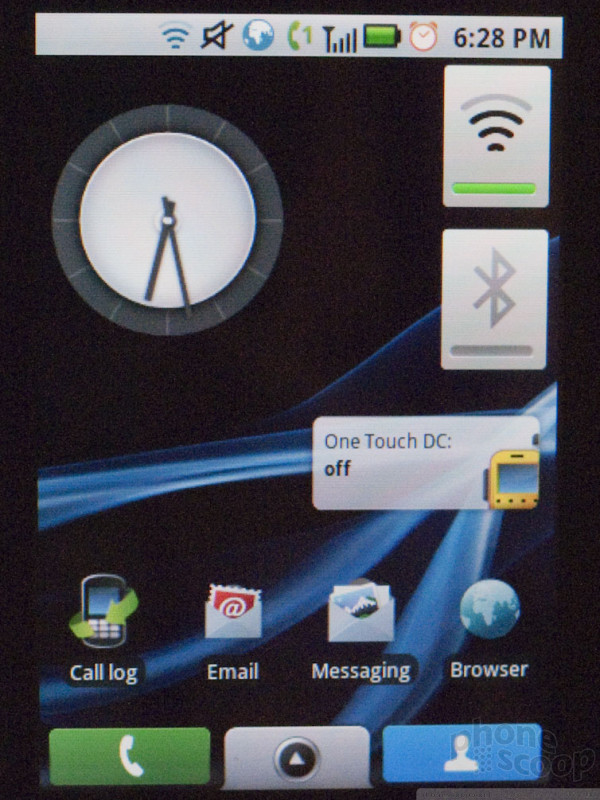

















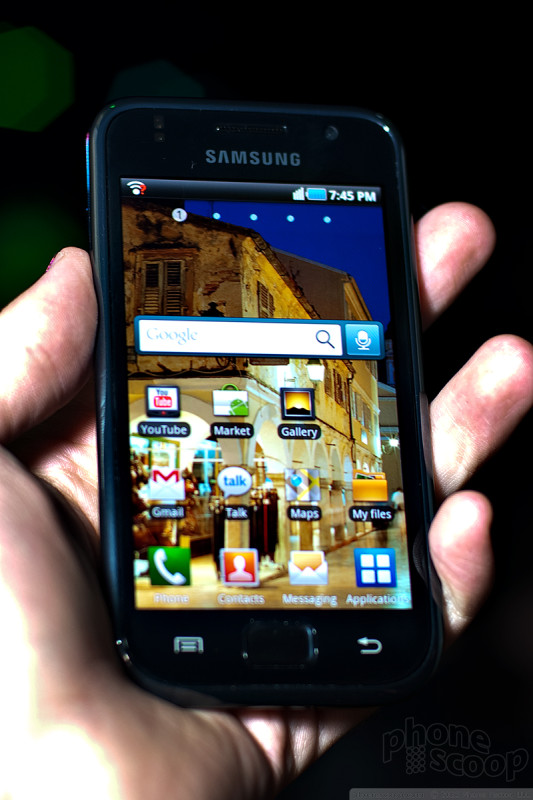
















































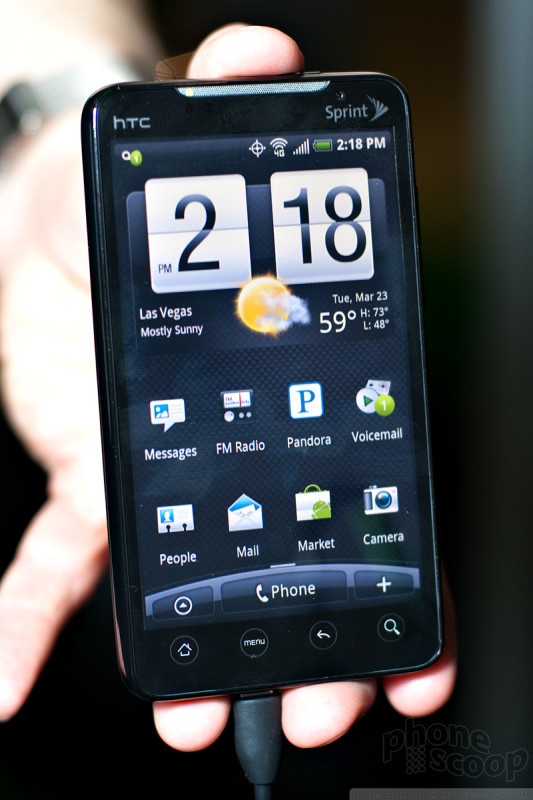










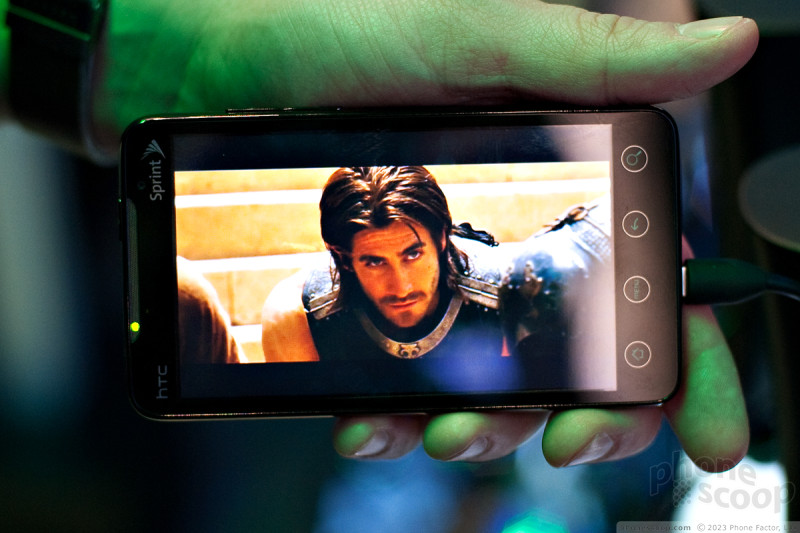





















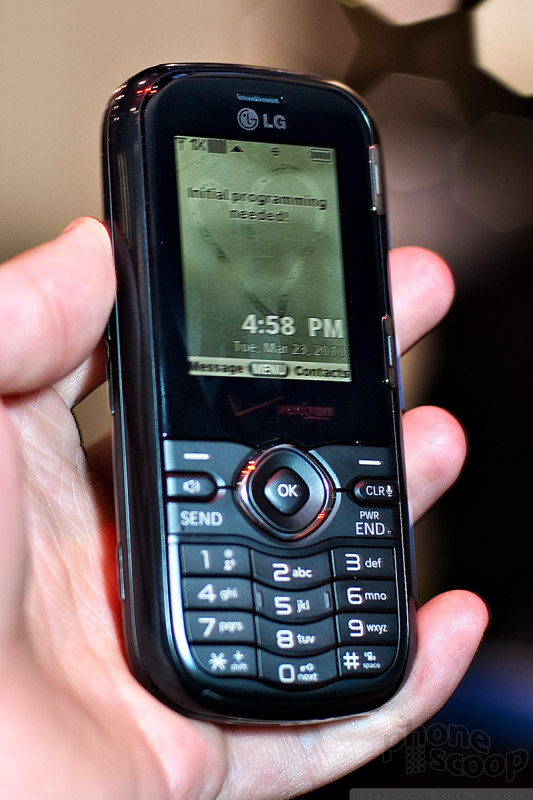



















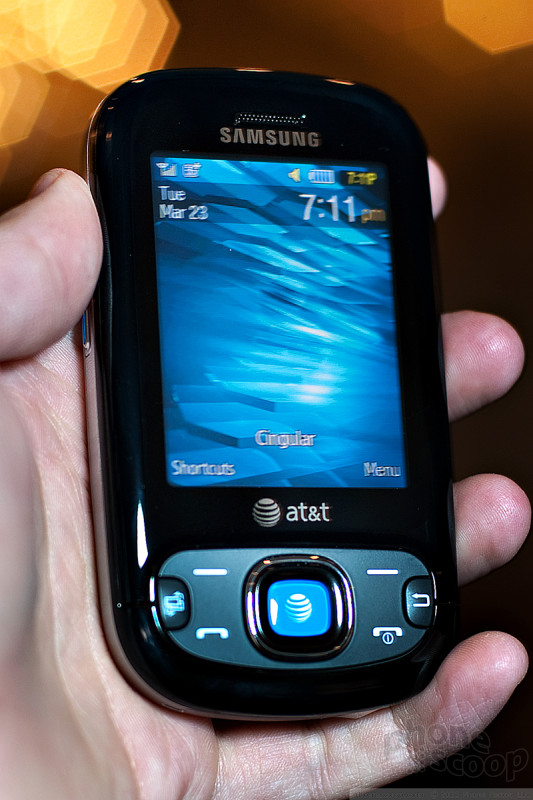








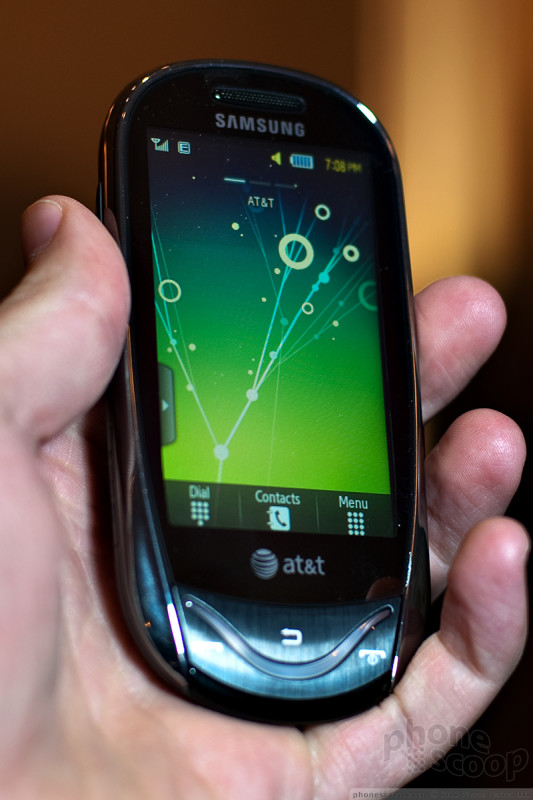























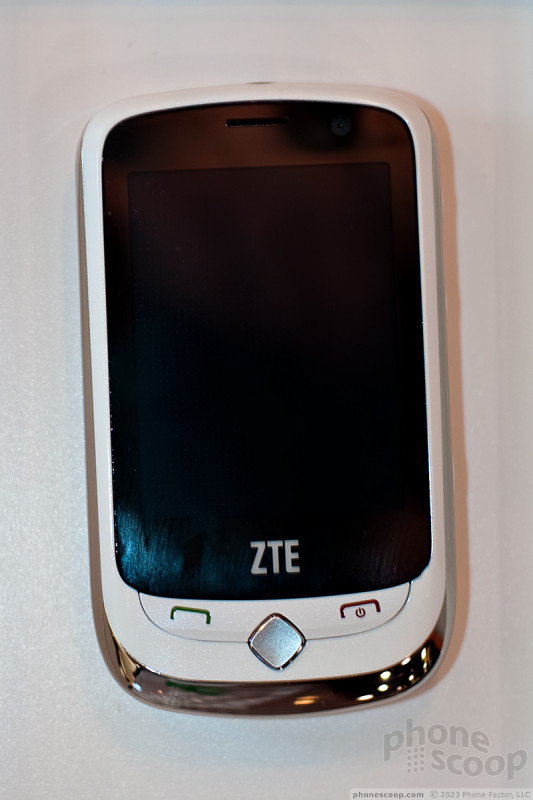






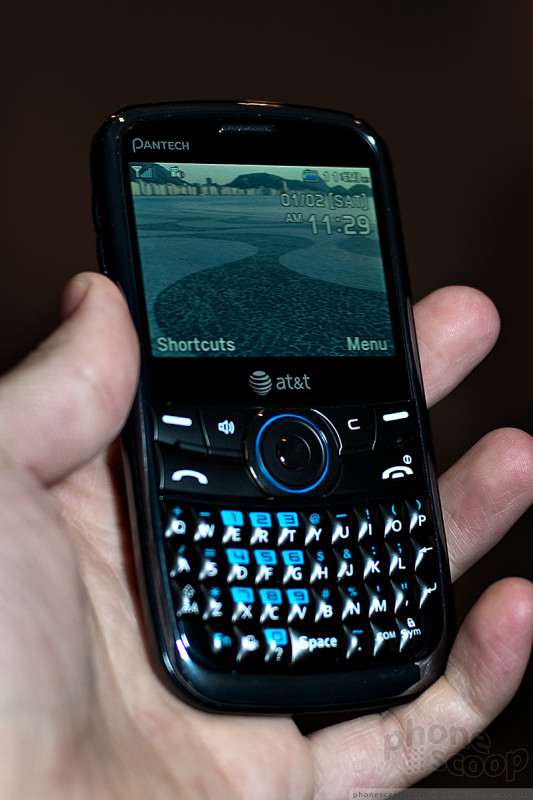






 Samsung Refreshes Galaxy S Series with S Pen, New Cameras
Samsung Refreshes Galaxy S Series with S Pen, New Cameras
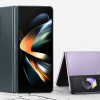 Samsung Refines its Foldable Phones
Samsung Refines its Foldable Phones
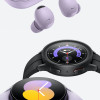 Samsung Upgrades its Wearables
Samsung Upgrades its Wearables
 iPhone 14 Plus Offers a Big Screen For Less
iPhone 14 Plus Offers a Big Screen For Less
 Samsung S24 Series Adds More AI, Updates the Hardware
Samsung S24 Series Adds More AI, Updates the Hardware

